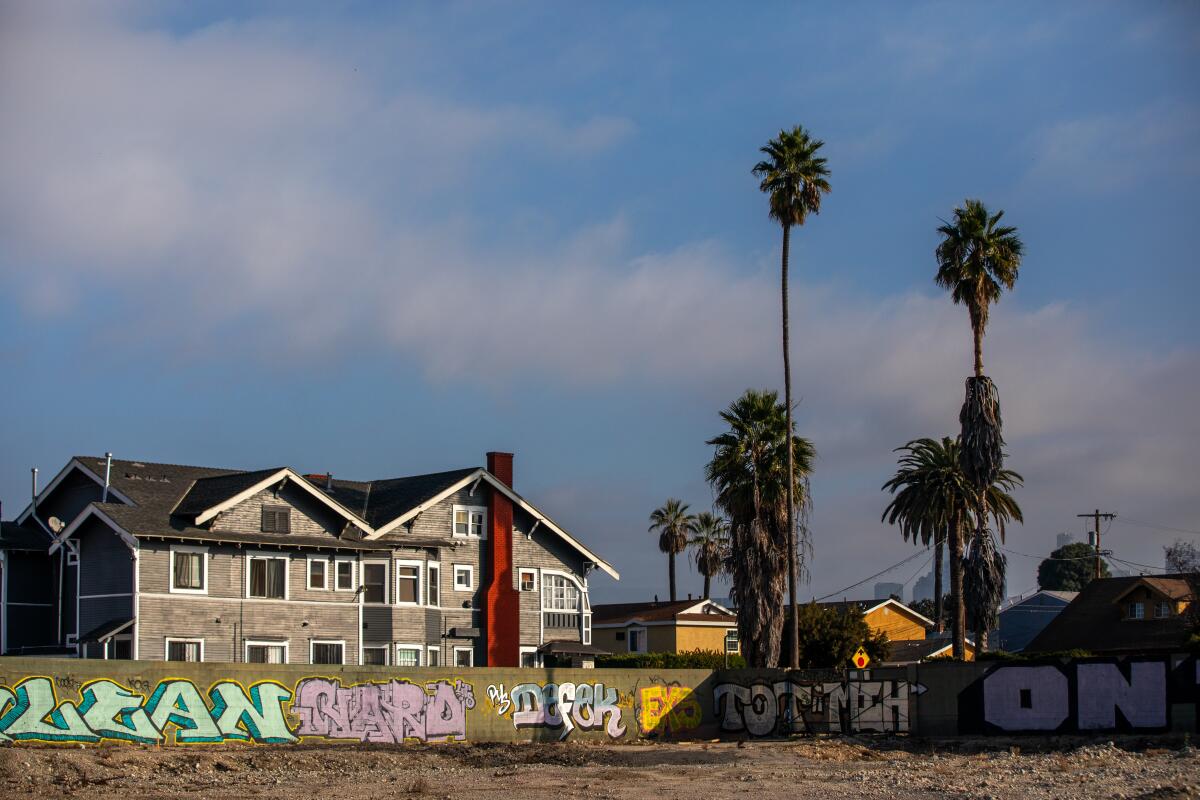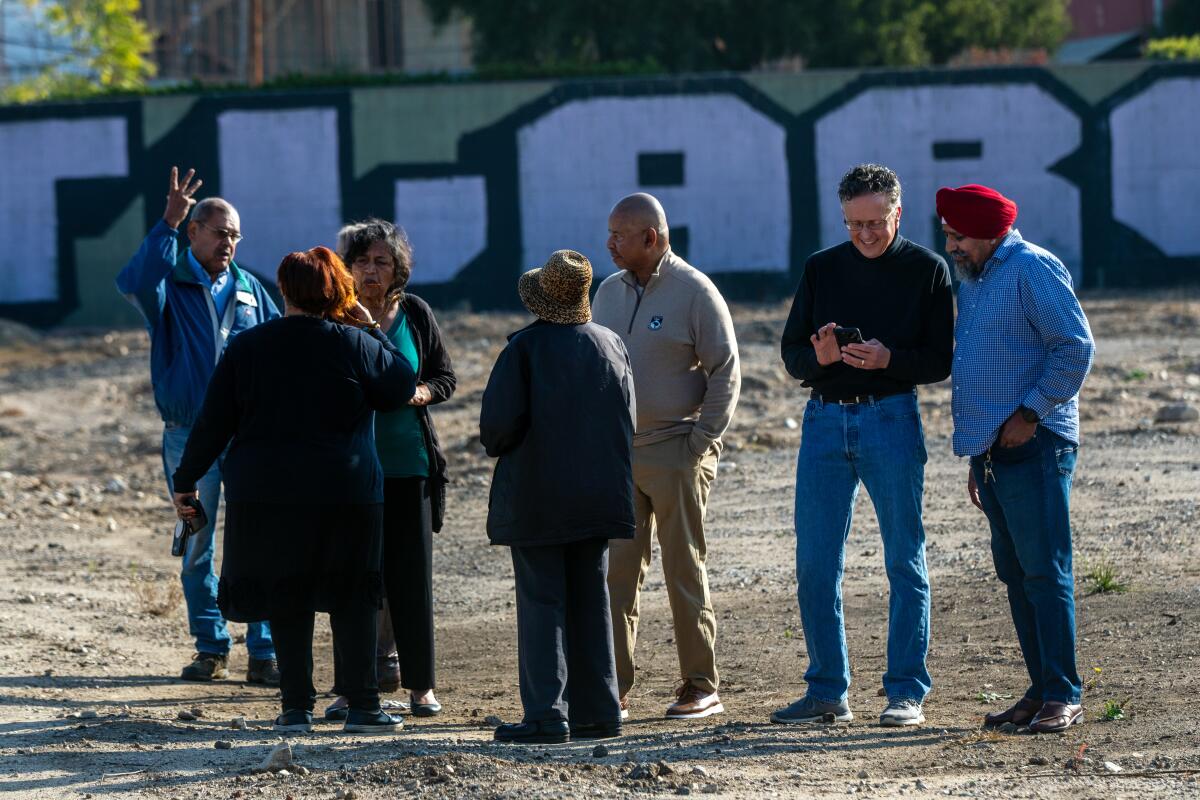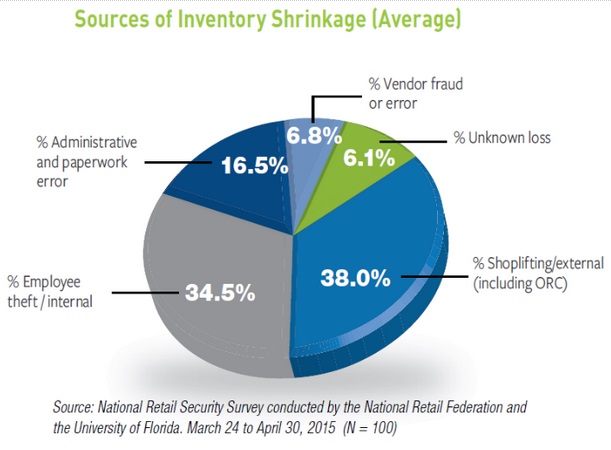[ad_1]
After a years-long neighborhood battle against an oil drilling site in South Los Angeles, a local nonprofit has purchased the now-demolished facility and plans to transform it into a park, community center and affordable housing.
The Los Angeles Neighborhood Land Trust recently bought the 1.86-acre dirt lot on Jefferson Boulevard for nearly $10 million from Sentinel Peak Resources. The nonprofit and its partners are now seeking grants and other funding sources to pay for planning, remediation and project execution.
“It’s what we hoped for,” Richard Parks, president of the South L.A. nonprofit Redeemer Community Partnership, said of the purchase. “It’s just so amazing to see our community receiving beauty for ashes. It’s overwhelming and feels like such a blessing.”
The sale marks a new chapter in a persistent and community-led fight against the oil drilling site, which residents argued for years was noisy and spewed foul odors. It also comes at a time of growing concerns about the risks and inequities of urban drilling in neighborhoods. L.A. City Councilmember Katy Yaroslavsky recently introduced legislation aiming to address public health and environmental threats posed by a drill site near the Pico-Robertson area.
Oil wells are known to emit carcinogens such as benzene and formaldehyde, and living near wells is associated with health problems such as respiratory issues and preterm births, studies have found.
Community leaders hope the purchase serves as a model for how to repurpose shuttered fossil fuel facilities as the city phases out existing oil and gas wells, a historic move approved last year by the L.A. City Council that also bans new oil and gas extraction.
Tori Kjer, executive director of the L.A. Neighborhood Land Trust, believes it is critical that these sites are transformed into uses that benefit communities historically affected by oil drilling. “It’s an environmental justice issue,” she said. It’s also imperative that planned site uses won’t displace residents through gentrification, she added.
“It’s so important, this idea of joint development, where you’re layering in affordable housing, community space and a park together,” she said. “For us, it’s really the ideal approach to equitable development in communities. … This is a rare opportunity, and an important opportunity, as we think bigger scale about future types of development in Los Angeles.”
Kjer estimates they will need three to six months and about $600,000 for remediation planning, and an additional year and $2 million to $3 million for cleanup. They are seeking state grants. The park’s budget will be about $6 million.
Lori R. Gay, president and chief executive of the Neighborhood Housing Services of Los Angeles County, said their target is to build 70 affordable housing units. They are also considering creating a community land trust to preserve the neighborhood and produce new homeowners.

After a years-long neighborhood battle against an oil drilling site in South L.A., a local nonprofit has purchased the now-demolished facility and plans to transform it into a park, community center and affordable housing.
(Francine Orr / Los Angeles Times)
“The Jefferson site is in a homeownership community, so we wanted to maintain both the integrity and culture of the community with affordable homeownership,” she said. “It is too easy to just build affordable housing focused on tenancy and not provide the opportunity to build generational wealth. This development provides the opportunity to build wealth for generations to come.”
But the grand visions for the property won’t come without hurdles.
Finding land trust lenders will be challenging, Gay said, as will plan reviews and significant market changes that could hinder the speed of development. Having multiple partners involved in a large project could also further complicate it, Kjer added. Planning, remediation and raising and finding finances will also be tricky.
“The housing kind of funds itself, and we have some really good prospects for funding the park through different grants, but the community center I think will be a very big challenge,” Parks said. “How do we raise the several million dollars to be able to build that out for the community?”
First approved nearly 60 years ago, the South L.A. oil site on West Jefferson Boulevard and Van Buren Place was situated closer to homes than any other city drilling facility, according to the nonprofit Community Health Councils.
In 2013, environmental justice advocates with Redeemer Community Partnership began organizing after the oil company requested permits by the city of Los Angeles to drill three new wells.
Parks remembered knocking on residents’ doors and hearing concerning stories about the nearby oil facility: One woman was sprayed with oil while she watered her front lawn. The noxious smells of diesel exhaust and petroleum fumes permeated through a toddler’s room even with the windows closed. Others complained of headaches and nosebleeds, and miscarriages were commonplace, he recalled.
A report by a petroleum administrator, who was hired in 2016 to oversee oil and gas operations in the city, noted that the Jefferson Boulevard facility was classified as having hydrogen sulfide gas, which can give off a rotten-eggs odor and cause smell loss, and that chemicals such as benzene have also been emitted from the site.

A group of community members who were involved in the fight against the Jefferson Boulevard oil drilling site stand on the demolished facility.
(Francine Orr / Los Angeles Times)
In 2017, after persistent demands from community activists to enclose the site, L.A. City Council members issued a set of stringent rules that oil companies must follow if they wanted to continue operating drilling sites next to homes in South L.A.
The requirements included, among other things, that drilling equipment be permanently closed off by a 45-foot-tall structure to reduce noise, odors and block glaring lights. It was a big victory for community activists, who had argued that the site exemplified the toxic outcomes of oil drilling in urban neighborhoods.
Officials at the time described the requirements as the toughest ever imposed on a drill site in L.A.
Newsletter
Get the lowdown on L.A. politics
Sign up for our L.A. City Hall newsletter to get weekly insights, scoops and analysis.
Enter email address
Sign Me Up
You may occasionally receive promotional content from the Los Angeles Times.
Sentinel Peak Resources spurned the commands and filed a lawsuit. The company argued that the new mandates were “unduly oppressive” and would force it to reduce or stop its operations.
Nearly a year later, the company announced it would shutter the site for good.
While it removed all oil operating equipment and capped the 36 wells on site, the community began working on a shared vision for the site’s future.
“Because we knew if we did not do that, that the toxic violence of oil extraction would be replaced by the violence of displacement,” Parks said. “Developers are coming in, they’re tearing down homes, they’re building up student housing, they’re driving out longtime residents, and we didn’t want to see that happen.”
With help from California Assemblymember Reggie Jones-Sawyer (D-Los Angeles), who is running for L.A. City Council District 10, they secured a $10-million state grant for those efforts.
“I’m really excited,” Jones-Sawyer said. “This will be the blueprint for how you can effectively make changes.”
When Redeemer Community Partnership contacted him about their vision for the land, “it seemed like the perfect combination of dealing with our housing crisis and dealing with our crisis with having no open space. And so when I had the opportunity to provide the $10 million … it seemed like a wonderful opportunity,” Jones-Sawyer said.
For residents such as Corissa Pacillas, who fought for years for more stringent protections from the Jefferson Boulevard site, the purchase exemplifies the power of organizing.
“It was encouraging to see that when people really intentionally organize and speak up, and are persistent … passionate and have good leadership … that change can happen,” said Pacillas, who spent years documenting the facility’s activities from the porch of her second-floor apartment. “I’m just so excited that the property … is going to go toward really benefiting the community.”
[ad_2]
Source link





















